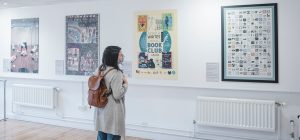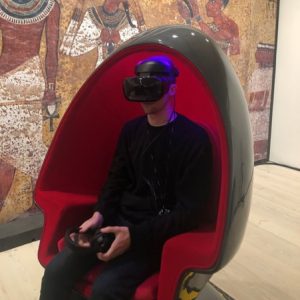The University of Exeter is an institute that values the arts. Its commissions, which you can read about via the Exeter Arts and Culture website, support the local artistic community and create opportunities for networking and learning.
The main aim of the University’s Arts and Culture strategy is to activate creativity, which involves supporting and the sharing of creativity both within and outside the University. The arts and culture team invite commissioned artists to make connections with research and researchers to inform their work and develop their practices, as well as invite researchers and academics to discover new perspectives to their work through interactions with creative practitioners. This potential for cross-fertilisation of ideas can enrich learning and impact for both parties.
The Exeter Arts and Culture website has a great ‘Resources’ section where you can discover more about a range of interdisciplinary and arts and culture projects from across the University, as well as other relevant research centres, networks and creative facilities for staff and students. Visit the page here.
As we begin the new academic year, there are some new artistic additions to the campus:
A new arts and culture display space in the Queen’s Building:
 Photograph ©Steve Haywood
Photograph ©Steve Haywood
A new arts and culture display space has been created in the Queens building which visually tells stories about university arts and culture projects. Its first display is ‘Shared Endeavours’ which showcases images of arts and culture projects and items from University collections and highlights the range of arts and culture resources available to students and staff.
The display is situated in the West Wing foyer just outside the Queen’s café. Featuring collaborations between artists, academics and students, and highlighting the process of interdisciplinary working across the University, the space displays curated images from the University’s Fine art collection, the Bill Douglas Cinema Museum and the Special Collections.
It is anticipated that each display will last for one term in duration, so be sure to check it out on your way to a lecture, seminar or when exploring the campus. The space is open Monday to Friday from 9am until 6pm.
If you are a researcher or member of staff working on a project at the University which involves an element of arts and culture and for which you could build a visually engaging 2D or digital display, click here to find out how your project could be part of the next display.
The Sculpture Walk:
Exeter’s Streatham Campus hosts 39 sculptures, both displayed indoors and outdoors, and the sculpture walk includes works by Dame Barbara Hepworth, Peter Randall-Page and other renowned and emerging artists.
Sculptures that are situated outside are currently available to view during daylight hours, perfect for a stop before or after a lecture, or for a break between studying. Although the University is not actively encouraging people to visit inside its buildings at the moment, you are permitted to go indoors to view the internally-situated sculptures, providing you follow the COVID-19 guidance on signage at the entrance to each individual building you enter, particularly ensuring that you wear a face mask. Visit the University’s Arts and Culture website to get the latest Covid guidance for visiting the sculptures, and download a map showing the sculpture locations.
To find out more about the work of Arts and Culture visit www.artsandcultureexeter.co.uk and to sign up to their monthly newsletter, click here.
Follow Arts and Culture on social media:
Twitter: https://twitter.com/artsandculturex
Instagram: https://www.instagram.com/artsandcultureex/
Facebook: https://www.facebook.com/ArtsAndCultureExeter


